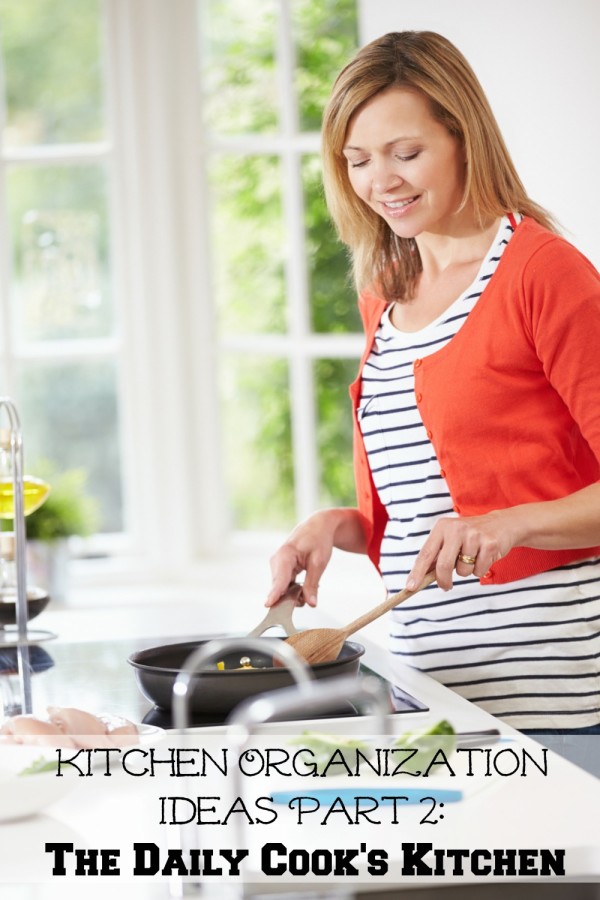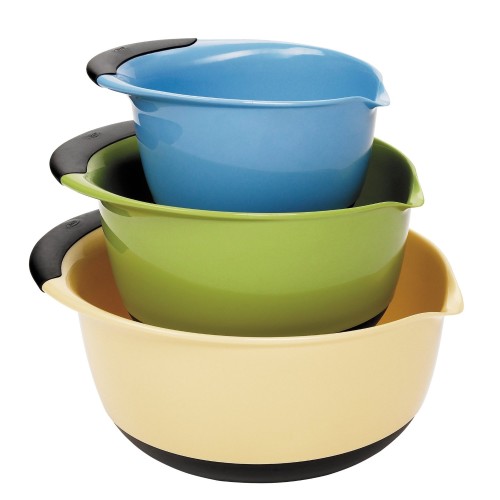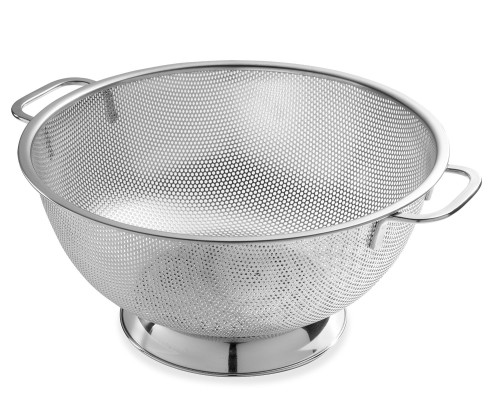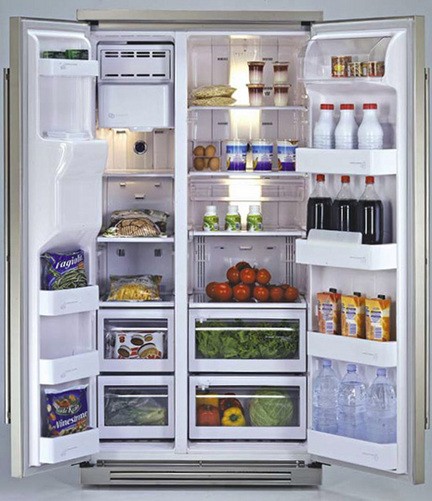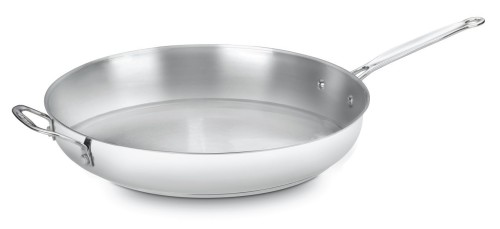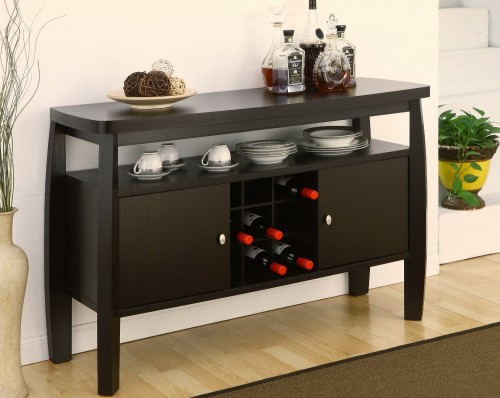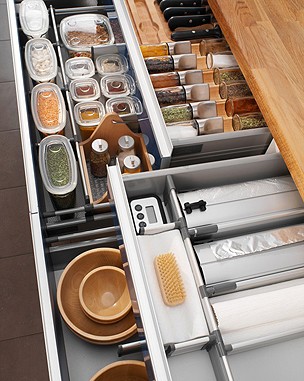This is Part 2 in my Kitchen Organization Ideas Series.
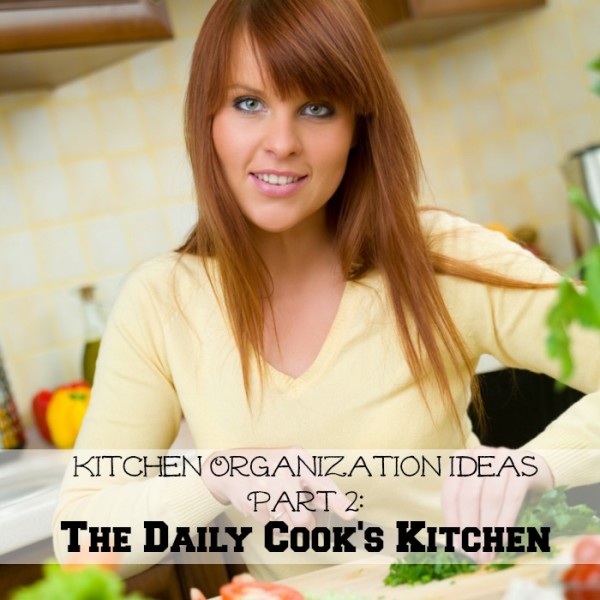
For the daily cook, an organized kitchen is a must. If you are in your kitchen everyday, there are some basic organization guidelines to follow which can help you whip up delicious meals faster and make clean up a breeze. A daily cook’s kitchen should work for them, not against them.
Basic Kitchen Organizing Guidelines
When I organized my kitchen in a way that really worked for me, cooking was more fun than it had ever been! I could cook a tasty and healthy meal in under 30 minutes. I also learned to clean as I went, which made clean up no big deal. It’s exhausting and no fun to spend the time and energy to prepare a great meal and then get up from the dinner table only to be greeted by what looks like the remnants of a bomb that went off in your kitchen. No thank you!
Here are some basic guidelines I feel are important for the daily cook to follow when organizing the kitchen:
- Keep necessities within easy reach
- Use under-cabinet space
- Put the walls to work
- Zone your kitchen
- Only keep items you use
- Use the right containers
Zoning The Kitchen
Let’s start by going over what zoning your kitchen means. (You can use these tips for the other cooking styles, which we will go over in the coming weeks.) This one little rule of thumb I learned several years ago, changed the way I cooked. Previously I always organized my kitchen with how the kitchen was set up and where you were “supposed” to put things. I never really took the time to organize it how it would work best for me and my cooking style, which possibly meant storing some items in unconventional places.
You know how when you walk into a preschool room there are different zones? There’s the dress up zone. The block building zone. The arts and crafts zone. And so on…Zoning your kitchen is the same exact concept. You set up stations. For example:
- Mixing zone
- Sink zone
- Refrigerator zone
- Cooking zone
- Food serving zone
- Food storage zone
The first thing you need to do is decide what zones your kitchen needs. Then get some boxes and label them with each zone. As you are purging and sorting items in your kitchen, the items you decide to keep will go into these separate boxes. You should also have several other boxes: goes in another room, donate, sell, throw away. If this seems like way too many boxes to you, instead of having separate boxes for the centers, you could put a blanket down and designate separate areas of the blanket for the zones. It’s up to you.
Here’s a breakdown of some possible centers for your kitchen. Remember to note where in your kitchen you naturally do these things. Where do you usually end up mixing up ingredients? If it’s always by the sink, that’s probably a great place for your mixing zone.
The Mixing Zone – It should contain anything you use when preparing food for baking, or oven food that requires some mixing first.
- containers of flour and sugar
- baking powder
- baking soda
- spices (the ones you mainly use for baking)
- extracts
- seasonings
- powdered sugar
- brown sugar
- shortening
- a mixer
- measuring spoons and cups
- spatulas
- wooden spoons
- mixing bowls
I set up my mixing zone by the kitchen sink. Why? Well for a number of reasons. When I am done with the mixing spoon, I can easily drop it into the sink of hot soapy water I’ve already prepared ahead of time. (This makes for super easy clean-up!) I don’t even have to move. That’s efficiency in the kitchen at its best!
The Sink Zone – Think of all the things you need the sink for. The daily cook spends a lot of time at the sink for things like washing fruits and veggies, filling up the juice pitcher with water, cleaning (obviously 🙂 ). The sink is the center of the kitchen where a lot of things happen.
Here are some items you might consider storing near the sink: (Remember, these are just ideas. Do what works for you!)
- knives and peelers for veggies, cutting boards
- can opener (for opening soups, juices, etc.)
- teakettles, saucepans
- glasses, pitchers
- colanders
- cleaning supplies
- you could store the veggies that do not need refrigeration in baskets or bins near the sink
- dishtowels
- bowl for collecting scraps and trash
- food processor for fast chopping
The Refrigerator Zone – This is another area I didn’t put much, okay any, thought into organizing. I mean who organizes their refrigerator?! Well, now I do and I wouldn’t go back.
Here are some refrigerator organizing tips:
Designate different shelves for different things. Like top shelf holds dairy products, bottom holds leftovers, etc.
Make a sandwich making kit. Just get a square rectangle container (that you have already checked if it will fit) 🙂 and fill it with all your sandwich making stuff – like condiments, lunch meat, cheese. We started doing this years ago and it is so easy to pull out the container, make a sandwich and then put it back.
Use the same size containers to store leftovers. They will stack easier and neater and make more room for other items.
Put apples or oranges in a bowl in the refrigerator instead of the little bins. I had to do this so that my kids would actually SEE the fruit. They kept telling me they would forget the fruit was there. Well now they have no excuse. I also did a little experiment to see if the fruit lasted longer in the bin as opposed to the bowl and for my fridge, there was no difference.
Make a point to go through your refrigerator once a week, preferably before you go to the store.
The Cooking Zone – This center is at the stove (I know, duh!). It is best to have this center right by the mixing center, but it may not work that way for you. Just be creative and work with what ya’ got!
Here is a list of items you might store there:
- pots, pans, skillets
- cooking utensils (wooden spoons, whisk)
- bake ware
- potholders
- cookbooks
- griddles
- cooking spray and oils
- spices used for stovetop and oven meals
- salt, pepper
- cookie sheets
- muffin tins
As you can see there are several items you will need in the mixing zone and the cooking zone, which is why it’s ideal to have them next to each other. You will whip up a batch of cookies in the mixing zone, and then you’ll need the cookie sheet to bake them on.
The Food Serving Zone – If you have a buffet table then that is a great location for this zone. I don’t because of space issues, so I use cabinet space.
Here are some items you might store here:
- serving platters
- place mats
- napkins
- tablecloths
- serving utensils
- breadbaskets
- salt, pepper shakers
- candlesticks
The Food Storage Zone – This could be a pantry, cabinets, or a cabinet you bought because your kitchen has no storage (believe me, we have moved 5 times in 7 years. I’ve had some awful kitchens!).
Items that go in this center are:
- canned goods
- boxed foods
- bottles
- paper products
- cereal
- snack foods
- bread
Let’s De-Clutter the Heck Out of The Kitchen
Now on to purging and sorting the kitchen. These 2 steps can happen simultaneously.
Go through every drawer and every cabinet. As you look at each item ask yourself some questions:
- Do I really need this? – It’s easy to collect things in the kitchen. Like having 5 can openers, 7 whisks, 22 spatulas, you get the picture. Only keep the items you really use. Also, get rid of the bulky appliances that when you first bought it, you just knew you were going to love it, and well, you ended up using it once.
- How long has it been since I used this? If you use it once a year for holidays, try storing it elsewhere so you can free up some extra storage space. If it is used a few times a year to daily, then keep it in the kitchen.
- Which center does it go in? If you decide to keep it, decide which area it is used in and put it in that box or spot on the floor for that center.
I know it can be hard to get rid of items. I naturally don’t have an issue with getting rid of clutter, but it can still be difficult for even me to part with some things, even if I know I don’t use them! Some items to toss are:
- Chipped or broken dishes
- Duplicate items
- Pots, pans, utensils, and bakeware that are burnt or rusted
- Excess stemware
- Excess plastic containers
- Ugly souvenir glasses and mugs you don’t actually like
A Few More Basic Kitchen Organizing Guidelines
Here are a few more basic kitchen guidelines that are good to follow:
Try to keep counters clear of decorative items for the most part. This will simplify the preparation and the clean up. Who has time to clean and dust all the nicknacks in the kitchen when they get splattered with oil and food. I sure don’t!
For items you use daily or several times a day, store them with the one-motion storage rule. Meaning, that you can open up a drawer or cabinet and it is right there. You do not have to move anything out of the way to get to it.
Store things at the first-point of use. Let go of what you are use to: storing all the food together, all the pans together, all the dishes together. It will save you time in the kitchen if you think outside the box a little.
Helpful hints for the kitchen:
While you are preparing dinner, have the sink filled with hot soapy water. When you are done with an item, throw it in the sink. It will start washing itself and make clean-up a snap!
Try to start dinner with an empty dishwasher. Either empty it first thing every morning or while your dinner is baking.
Have your family scrape and rinse their own plates and put them in the dishwasher.
That’s it for The Daily Cook’s Kitchen! Come back next week for part 3 of my Kitchen Organization Ideas Series.
